Story, Understory and Shrub Suggestions
8 years ago
Featured Answer
Sort by:Oldest
Comments (23)
- 8 years ago
- 8 years agolast modified: 8 years ago
Related Discussions
Need suggestions for small tree/shrub
Comments (17)I can't figure out what your goals are for this area. Do you want to screen the chairs from view? Curb appeal and interest from inside. I do not care about screening chairs from view. In fact, I do not want anything so tall and wide that we wouldn't be able to look out when sitting on our porch. You said you replanted, what is there now? You will be surprised how tall Joe-Pye weed gets. It looks great with feather reed grass, coneflower and sedum. All of these perennials have good winter interest, and can take snow load. But unless you add some shrubs for structure, these may not be the best choices. I'm not sure how the maple relates to this planting area. I think you might be happier if you widen the bed to include the maple and use groups of three to five shrubs to fill in the space between. That little evergreen could use a couple of buddies, going out towards the spruce. I would love to see more repetition (small plants repeated in groups)and structure from the shrubs, instead of one of this and one of that. "That little evergreen" will eventually meet her demise too. It's a dwarf Alberta Spruce and it gets terrible tip burn. I'll be replacing her within a few seasons I'm sure. Most of my neighbors have already taken theirs out. The raised bed has a mixed bag of tricks.... Iris, Turtlehead, 2 sedum, a pinks, japanese hakone grass, joe pye weed, Tiger Eye Sumac and a couple other perennials. I knew they'd get crowded last year so I planned to thin them out this year. I am considering widening the bed to include the maple too. Maybe in 2011. I don't want to set myself up to only half-ass these projects. And hubby hates it when I start killing grass for planting beds.... I have to choose my battle there!... that battle is probably better fought next year! As of today, if I HAD to choose what to put in that spot, I would probably choose Silver Feather Maiden Grass. I have a 3-year old clump in my back garden that I was thinking of moving anyway, so I'm giving some very serious thought to that proposition. And then there is still the option of a structure of some sort. I'm going to shop around a bit to see what there might be. I love Ken's idea of an armillary sphere. We have a few of them in the house as bookshelf art. And we have an armillary style sundial in our back garden. I bought it for him on our honeymoon! I've been giving a lot of thought to paying for a designer to draw up a plan for our front yard. I know I need to remove the rock... I can't imagine how many tons of rock the previous owners had delivered to this house.... too bad it's rock mulch and not boulders. In some places, it's 8" or more thick. But, the good news is that with the heavy duty landscape plastic that was used, we RARELY have weeds. The bad news is that once I take all that up, the soil is going to not have touched oxygen for 8-9 years. Ugh....See MoreP/s ID shrubs and suggest pruning season for each.
Comments (3)A. Is either a Pee Gee Hydrangea or Limelight...I'd say it looks more like a Pee Gee. B. Another Hydrangea ...probably Tardiva or Kyushu. Both hydrangeas are paniculatas and bloom on "current" years growth, so you can cut them back fairly hard in fall or early spring. C. Potentilla (prune to shape after flowering)...or cut out old stems to rejuvenate. D.Looks like Summer Wine Ninebark E. Spirea...can take severe pruning if required. F. Looks like a Black eyed Susan..... Ian...See MoreWhat are your favorite PNW native understory shrubs?
Comments (8)Common snowberry would probably grow, provide winter color. Your conifers are likely to be mostly Douglas firs. Salal, Oregon grape, evergreen huckleberry and ocean spray are typical associates on sites tending towards dry. Ceanothus (C. velutinus) and manzanita are found on the hottest, most exposed and/or sandy sites here. Columbia manzanita is so prone to spotting and blackening of the foliage that it is not really a satisfactory ornamental on the whole. There ARE some old ones in local gardens here and there, on rockeries and in other exposed positions. Often when examined up close the foliage is infested. Indian plum is characteristic of floodplains and other places where soils become damp in winter. Red elderberry also prefers it moist and fertile, the lush look of many deciduous trees and shrubs and woodland wildflowers hints at what they want. All occur on sites less than perfect in nature, and can be readily coaxed into growing in gardens made not on sites they would be found on spontaneously using simple tricks like watering a little in summer or planting against a south-facing wall. Going on walks and looking at nearby undeveloped lots, uncleared portions of city parks and other places where there is still natural vegetation and noting what grows where could be highly instructive. Keep soil fertility and moisture regimes in mind, as well as light exposure. You can actually analyze a site using the native plants that are growing on it....See MoreA Few Suitable Shrub Suggestions Needed
Comments (1)There is little need to worry too much about dropping zones for most things you may choose. That type of location tends to accumulate a lot of reflected heat, even in winter, and a similar situation (downtown Seattle, rooftop deck, southwestern exposure) sees even zonal geraniums and some annuals overwintering without protection. I'd hesitate to suggest many natives, specially higher elevation ones, as they will not be well suited to this severe, open exposure and intense, reflected summer heat. A good number of dwarf conifers will work very well, although perhaps not as ornamental as you might like. Also dwarf ceanothus ('Vandenberg'), abelia, nandina, ornamental grasses, New Zealand flax and hebes should be suitable. On that same Seattle rooftop are growing an assortment of small Japanese and several vine maples, a 'Spaan's Dwarf' shore pine, a "hedge" of arborvitaes, Nandina 'Gulf Stream', bamboo, Pittosporum tobira, euphorbias, lavender, rosemary, sedums, various phormiums and hebes and an assortment of seasonal annuals. Also a great location for various herbs and one of the best crops of tomatoes I've ever seen! I'd suggest you rig up a drip system on a timer for watering unless daily attention can be provided in the summer....See More- 8 years ago
- 8 years ago
- 8 years ago
- 8 years ago
- 8 years ago
- 8 years agolast modified: 8 years ago
- 8 years ago
- 8 years ago
- 8 years ago
- 8 years ago
- 8 years ago
- 8 years ago
- 8 years ago
- 8 years ago
- 8 years ago
- 8 years ago
- 8 years ago
- 8 years ago
Related Stories
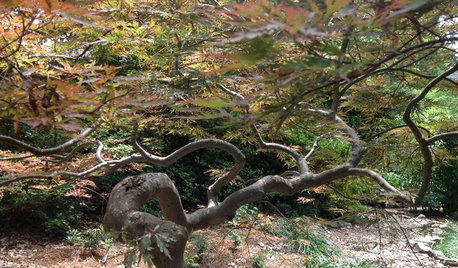
FALL GARDENINGA Garden With a Love Story
Over 23 years, a North Carolina couple has created an inviting, magical garden that harmonizes with its woodland setting
Full Story
ARCHITECTURETell a Story With Design for a More Meaningful Home
Go beyond a home's bones to find the narrative at its heart, for a more rewarding experience
Full Story
FALL GARDENING9 Deer-Resistant Flowering Shrubs to Plant This Fall
These exquisite shrubs will attract your attention but won’t tempt the deer that roam your neighborhood at night
Full Story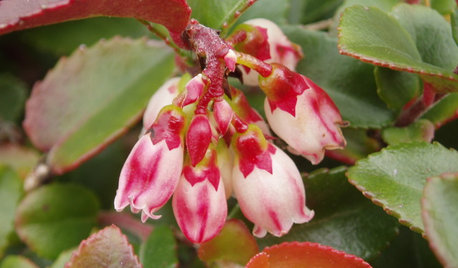
GARDENING GUIDESGreat Design Plant: Evergreen Huckleberry Appeals All Year
Spring flowers and summer berries are only half the story with Vaccinium ovatum, a versatile Pacific Northwest native plant
Full Story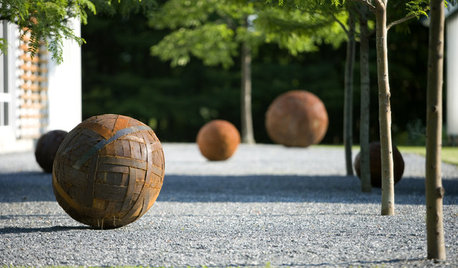
LANDSCAPE DESIGNWhat Kind of Gardener Are You? Find Your Archetype
Pick from our descriptions to create a garden that matches your personality and tells your story
Full Story
FUN HOUZZ31 True Tales of Remodeling Gone Wild
Drugs, sex, excess — the home design industry is rife with stories that will blow your mind, or at least leave you scratching your head
Full Story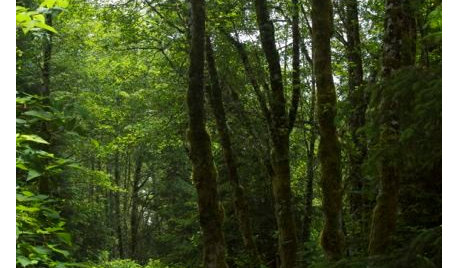
LANDSCAPE DESIGNLet Nature Inspire Your Landscape: Ideas for a Woodland Garden
Fill your senses with the magic of a wild forest-inspired garden — from shady understory plants to towering treetops
Full Story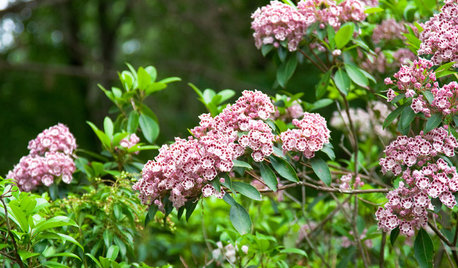
FLOWERS AND PLANTSKalmia Latifolia’s Origami-Like Flowers Shine in the Shade
This shade-tolerant shrub, also known as mountain laurel or calico shrub, thrives in East Coast woodland gardens
Full Story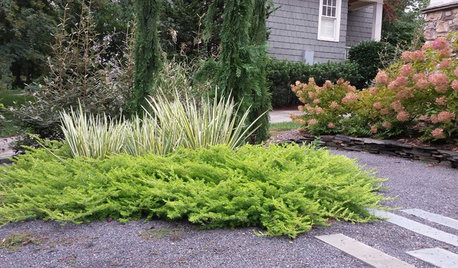
PLANTING IDEASThese Aren’t Your Grandparents’ Junipers
Dislike junipers? Maybe it’s time to discover new varieties and new uses for this garden workhorse
Full Story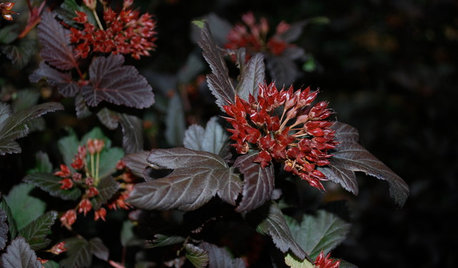
LANDSCAPE DESIGNGreat Design Plant: Sun-Loving Ninebark Puts on a Color Show
This tall, dark and handsome native shrub is equally at home in jeans and boots or in a suit and tie
Full StoryMore Discussions



User